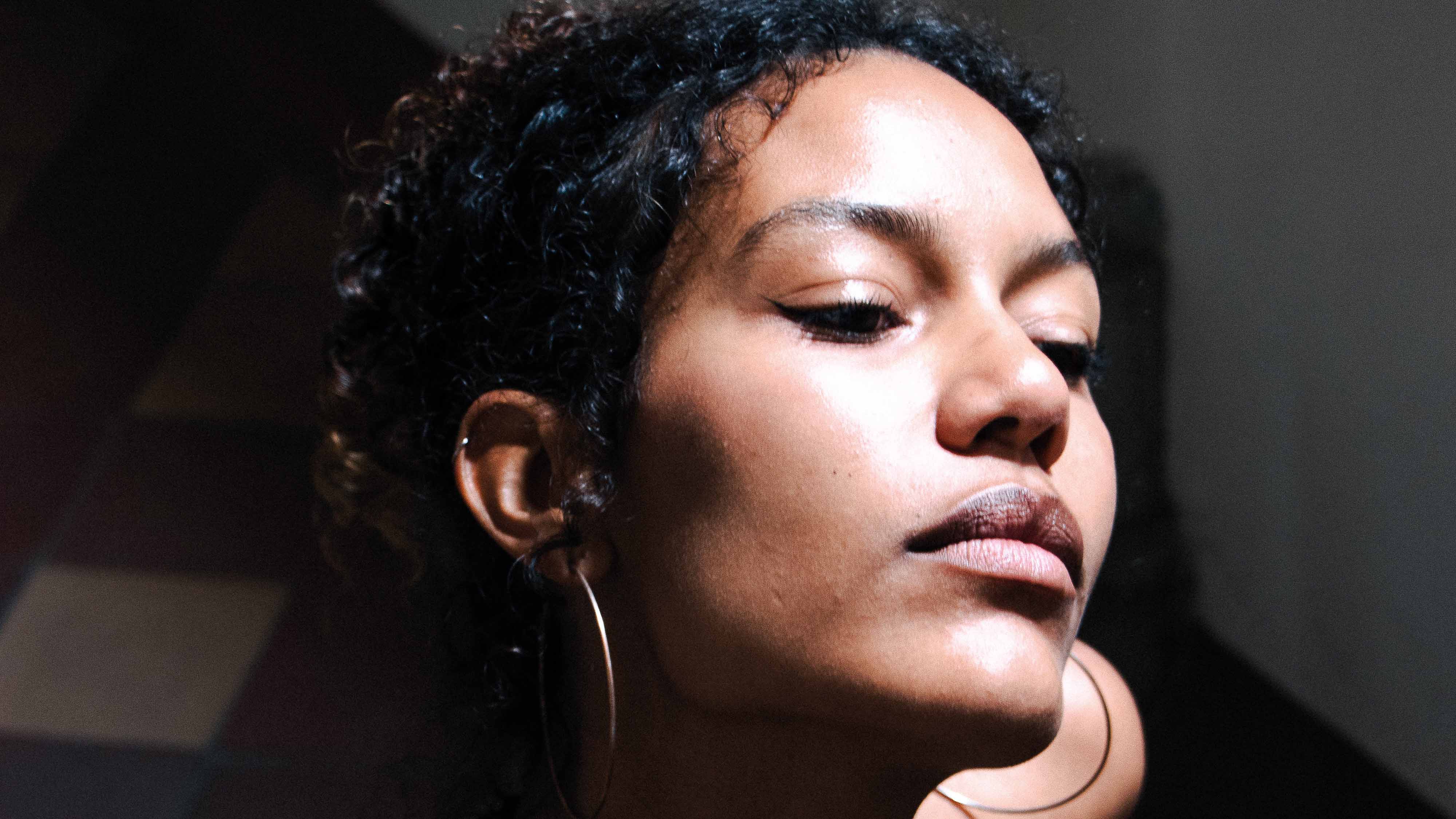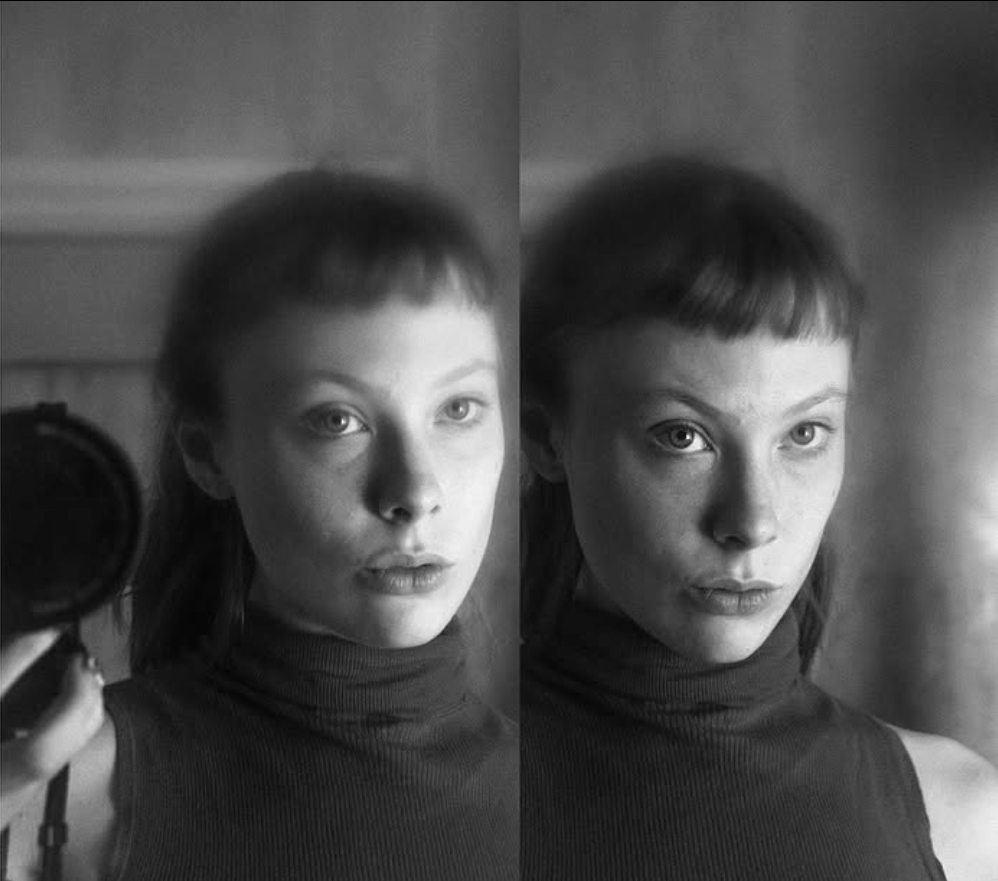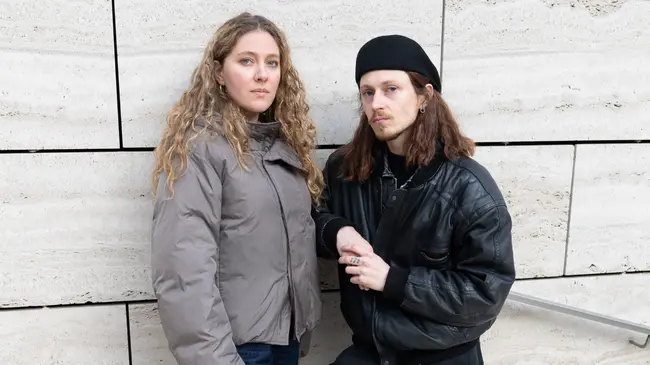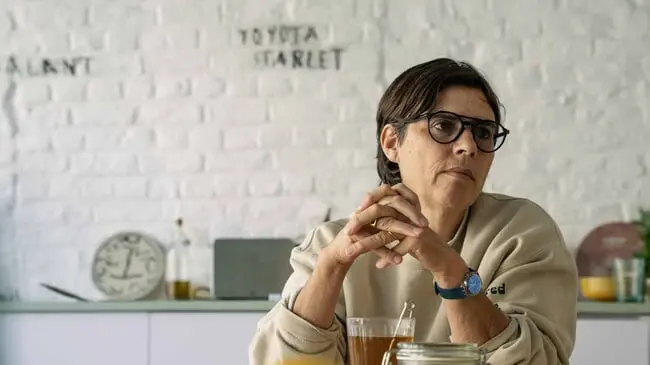Who Am I Without You Mister Man?

In an effort to understand visual communication between men and women, Lotte Toko Lelo Maes creates a documentary photo series using her body and the camera to quietly interrupt male-dominated environments. Present yet restrained, she faces the lens as she documents tension, vulnerability and control. Echoing her poem Who am I without you, Mister Man?, Lotte challenges inherited power structures - not only by confronting the men in public spaces, but also by gazing back at us, the viewers.
How did you decide to use your own body as an avatar for your research?
I did a minor in performance at KASK, and with that, I realised that there is a lot of research that can be done with your own body. I wanted to research the tension in experiencing what I was capturing. Documentary work usually teaches you to stay hidden behind the camera and to observe without interfering, but I wanted to break through that a bit.
<img class="editorial-image-50-left" src="https://cdn.prod.website-files.com/61eebcc683107b99137f4423/688a2701243d536edd333d44_Lotte10-12.avif"/>
<img class="editorial-image-50-right" src="https://cdn.prod.website-files.com/61eebcc683107b99137f4423/688a2700dab13771937befd9_Lotte17-5.avif"/>
What did you discover about male-dominated spaces that you hadn’t noticed in your daily life?
I found these spaces by asking male friends or conducting simple Google searches asking ‘where do only men go?’ and also from my everyday observations - places that I instinctively avoided, like certain cafés, construction sites or even golf courses. I already felt alien in those spaces. Even before undressing for the project, I felt like I was being intrusive. But the reactions varied widely - some men, despite being taken aback by me, were curious, welcoming or found it funny, while others were uncomfortable and hostile. I concluded that these spaces are so tightly maintained as male spaces, but I hadn’t realised how deeply ingrained that was. Despite somewhat expecting it, I’ve always wanted to avoid polarising men and women too much, but it felt very real.
<img class="editorial-image-50-left" src="https://cdn.prod.website-files.com/61eebcc683107b99137f4423/688a26bc0112441e8258bac9_Lotte9-13.avif"/>
<img class="editorial-image-50-right" src="https://cdn.prod.website-files.com/61eebcc683107b99137f4423/688a26fed61f2773a2fb85cd_Lotte6-19.avif"/>
Did the camera play a role in their reaction as well?
Of course, being recorded in any kind of way changes the dynamic. The camera has a lot of presence and a sort of agency. It felt like a protector; it was the only power and control I had in the situation, and I would have generally felt less safe without it. I was very clear about consent, so I asked everyone if they were comfortable being photographed. Most were fine with it; it was just a matter of them getting used to it, so that’s also one of the reasons why I stood there for a long time. It was important for me to give them the choice to work with me because this isn’t an exposé; it’s about communicating with these men.
<img class="editorial-image-50-left" src="https://cdn.prod.website-files.com/61eebcc683107b99137f4423/688a26fe91d545879ba6cd2f_Lotte11-11.avif"/>
<img class="editorial-image-50-right" src="https://cdn.prod.website-files.com/61eebcc683107b99137f4423/688a2700258d82c6e13f7c88_Lotte19-3.avif"/>
How did themes like vulnerability and healing intersect in your interactions during the project?
I notice there's a big difference between dressing how I like - in short skirts, with makeup and feeling free, versus how I felt during this project. I stripped away all the elements that make me feel attractive: no makeup, no jewellery, etc. I felt very vulnerable. I wanted to avoid being like a doll standing there, so my interactions, appearance and the garments I chose had to be as neutral as possible. At times, seduction can feel powerful or even like a form of protection. Doing this also helped me with healing because I wanted the courage to create space for communication with men. I don’t want to take their space. I want to confront them with the female body in their space.
<img class="editorial-image" src="https://cdn.prod.website-files.com/61eebcc683107b99137f4423/688a26bb56edca8d061e63b4_Lotte-1.avif"/>
There are non-complementary bodies of work that I presented in the project, which were made to show a more vulnerable element. That was important because I feel like female artists get a lot of commentary about being emotional beings. You see in the series that I am more daring and ‘neutral’, but it wasn’t meant to say ‘look how bold and fearless I am.’ I included the other body of work because it’s important for me that women can tell their raw stories and come out with them despite the pressures in the art field. I hope this project can help both men and women.
What have you discovered so far in your attempt at reclaiming the gaze?
I am still in the process of discovery, so I’d like to leave this open. But at first, it was a lot about taking away attractive traits, putting the body there and having control of the camera to break down this patriarchal gaze. I chose to wear shorts and a rectangle top to avoid playing into the image of the ‘sexy’ and ‘emotional’ woman - I didn’t want to be masculine or feminine. I also wanted to include observers in the dynamic as they watch the interaction. I’ve discovered that a lot of men don’t want to connect with the female experience - yet some do, but feel alienated and confused by their position in these spaces, so they don’t know how to reach out. So I learned that, despite not fully overcoming the fear, these men can in fact be spoken to, and I can approach them with more confidence than before.
<img class="editorial-image-50-left" src="https://cdn.prod.website-files.com/61eebcc683107b99137f4423/688a26bc4e24e03b006d7841_Lotte7-20.avif"/>
<img class="editorial-image-50-right" src="https://cdn.prod.website-files.com/61eebcc683107b99137f4423/688a26bc2296a1ff2cbf30cf_Lotte13-9.avif"/>
Given that you studied such intimate themes, how did your studies at KASK help you navigate this research?
I appreciated the minors at KASK. They gave me an opportunity to choose something connected to my practice, yet totally different. As I mentioned earlier, my minor in performance inspired me to come up with this project. The school has a large library and a lot of theoretical courses with a variety of artists’ texts and a range of themes from activism to philosophy, where I found so much motivation and help with my research.
<div class="editorial-banner"> <div class=“editorial-credits”> @lottemaesss<br/><br>Different Class and KASK & Conservatorium are teaming up for a series of artist portraits, featuring some of the interesting alumni and student profiles. The new academic year starts on 22.09.2025. Students can register till the end of September.<br/> schoolofartsgent.be</div></div>
Different Class works with the interest of their community at heart.
Our work’s purpose is to foster a solid network for independent artists, those who love them, and those who want to support them. Become a member to contribute to the local Belgian art scene.






